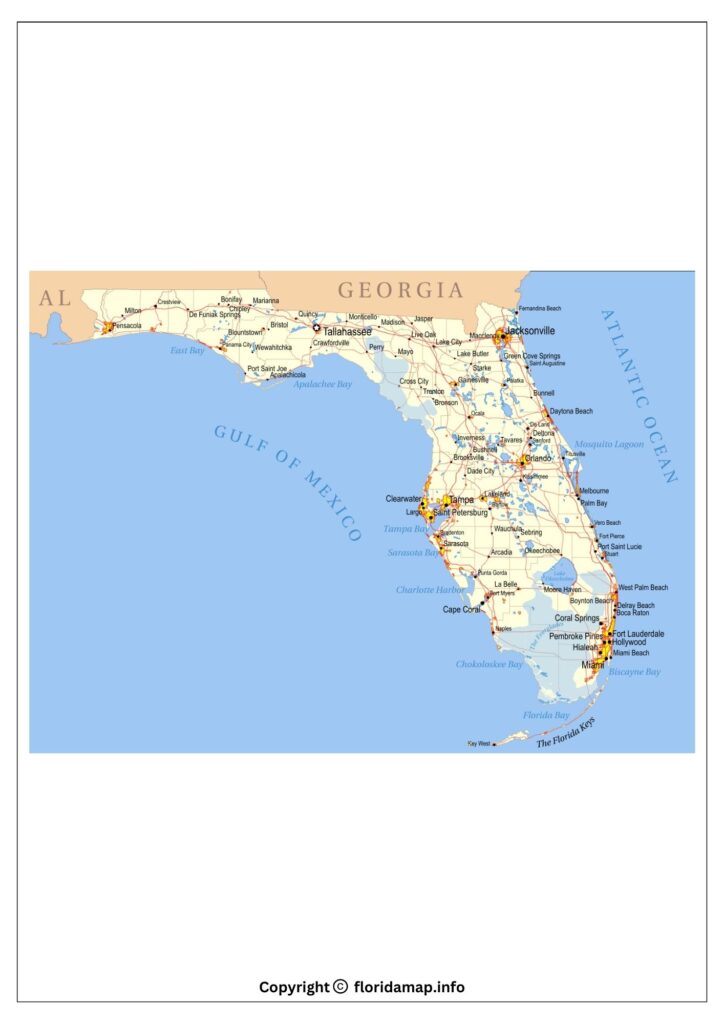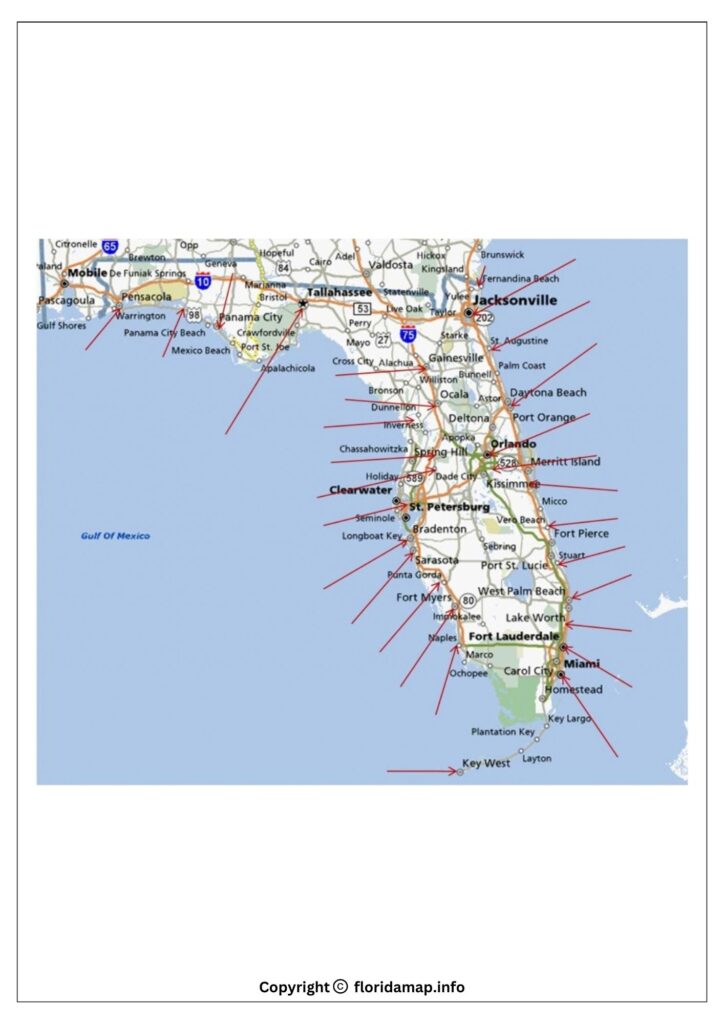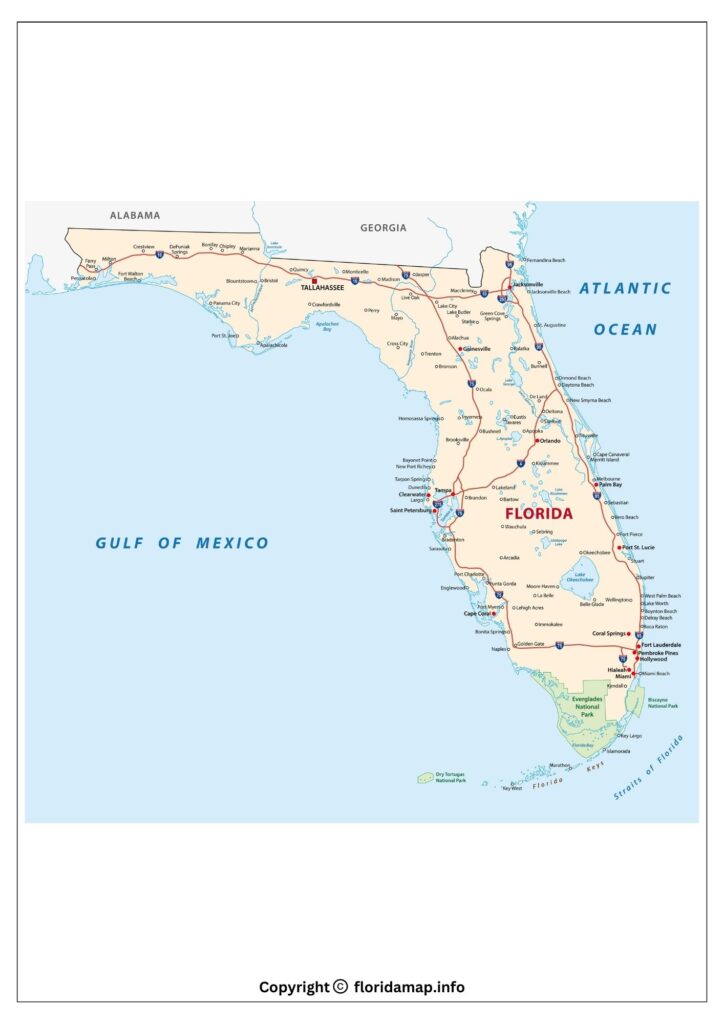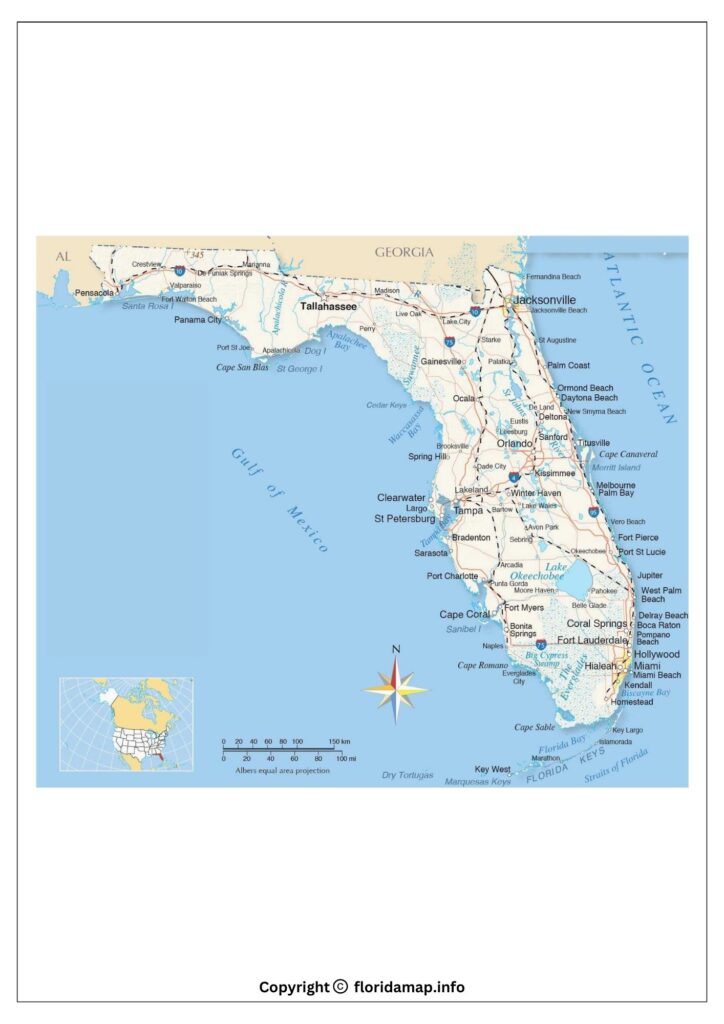A map of Florida East Coast beaches serves various purposes and offers several benefits for residents and visitors.
Related Post –
Map of Florida East Coast
- Navigation and Travel Planning: Visitors can use the map to plan their trips along the Florida East Coast, identifying key beach destinations, attractions, and accommodations. Travelers can navigate coastal highways and scenic routes using the map, exploring different beach towns and landmarks.
- Beach Access and Amenities: The map helps beach enthusiasts find access points, parking areas, and facilities like restrooms, picnic areas, and concessions. It guides users to specific areas for water sports, fishing, and other recreational activities along the coastline.
- Local Business and Services: Maps can highlight local businesses, including restaurants, shops, and entertainment venues, contributing to the local economy. Locals and visitors can easily locate essential services like pharmacies, grocery stores, and medical facilities.
- Property Search: Individuals interested in real estate or vacation rentals can use the map to explore different neighborhoods, assess proximity to the beach, and identify local amenities.
- Development Opportunities: Real estate developers and investors may use the map to identify potential areas for development.
- Emergency Preparedness: In times of emergencies such as hurricanes, residents can use the map to identify evacuation routes and emergency shelters. Locating hospitals, police stations, and other emergency services is crucial during times of crisis.
Map of the East Coast of Florida
- Recreation and Events: Maps can be useful for planning and attending local events, festivals, and gatherings along the Florida East Coast. Users can find parks, nature reserves, and other recreational spots for outdoor activities.
- Environmental Awareness: Maps can highlight environmentally sensitive areas, wildlife habitats, and conservation efforts along the coastline. Nature enthusiasts can use maps to discover areas suitable for birdwatching, wildlife observation, and eco-friendly tourism.
- Public Transportation: Maps may display public transportation options, helping locals and tourists navigate the area without a private vehicle.
- Infrastructure Development: Maps play a role in urban planning and development, assisting authorities in making decisions about roads, bridges, and other infrastructure projects.
- Educational Purposes: Maps can be used for educational purposes, helping students and researchers study the geography, ecology, and cultural aspects of the Florida East Coast.
- Exploration and Navigation: Early explorers like Ponce de Leon and Juan Ponce de León relied on rudimentary maps to navigate the unfamiliar coastline, charting waterways, inlets, and potential dangers. These maps, often hand-drawn and inaccurate, laid the groundwork for future exploration and settlement.
- As Florida transitioned from a Spanish colony to American territory, detailed maps became essential for military campaigns, establishing forts and strategic outposts, and guiding troop movements during conflicts like the Seminole Wars.
- Economic Development: Accurate maps fueled the growth of Florida’s key industries. Plantation owners used them to plan land use, allocate resources, and establish transportation routes for their crops. Port cities like Miami and Jacksonville relied on maps to chart shipping lanes, facilitating trade and commerce.
The tourism boom of the late 19th and early 20th centuries heavily relied on maps. They advertised the beauty of the beaches, accessibility of resorts, and interconnectedness of coastal towns, attracting vacationers and fueling the region’s economic engine.
East Coast of Florida Map
- Scientific Understanding: Maps have been vital for documenting and studying the unique ecosystems of the East Coast. They have helped scientists map the delicate balance of barrier islands, mangroves, and coral reefs, crucial for understanding coastal erosion, marine life migration patterns, and the impact of hurricanes.
- Modern maps incorporating satellite imagery and real-time data play a critical role in monitoring environmental changes, tracking pollution, and managing natural resources like the Everglades National Park, ensuring the health and sustainability of the coast.
- Urban Planning and Infrastructure: From the construction of Henry Flagler’s Florida East Coast Railway to the development of Miami’s Art Deco, maps have guided urban planning and infrastructure projects. They have informed decisions about road networks, bridges, canals, and public spaces, shaping the very fabric of coastal cities.
As Florida’s population continues to surge, detailed maps are more important than ever. They help planners address challenges like traffic congestion, sea-level rise, and resource allocation, ensuring the East Coast remains a livable and thriving region.
A map of the East Coast of Florida is not just a piece of paper. It’s a window into the region’s past, present, and future. It’s a testament to human exploration, economic endeavors, scientific inquiry, and the ongoing quest to build a sustainable and vibrant coastal community.
In summary, a map of Florida East Coast beaches is a versatile tool that enhances the overall experience of residents and visitors. It contributes to efficient navigation, supports local businesses, aids in emergency preparedness, and promotes sustainable development along the coastline.



